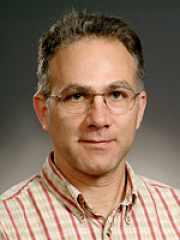非常抱歉,
你要访问的页面不存在,
非常抱歉,
你要访问的页面不存在,
非常抱歉,
你要访问的页面不存在,
验证码:

职称:Professor
所属学校:University of Florida
所属院系:Engineering, Herbert Wertheim College of
所属专业:Computer and Information Sciences, General
联系方式:(352) 262-426
Paul Gader received his Ph.D. in Mathematics for parallel image processing and applied mathematics research in 1986 from the University of Florida. He has worked as a Senior Research Scientist at Honeywell’s Systems and Research Center, as a Research Engineer and Manager at the Environmental Research Institute of Michigan (ERIM), and as a faculty member at the University of Wisconsin - Oshkosh, and the University of Missouri - Columbia. He joined the faculty of the University of Florida in August 2001. He performed his first research in image processing in 1984 when he worked on algorithms for detection of bridges in Forward Looking Infra-Red (FLIR) imagery. At ERIM and later at the University of Missouri, he led teams involved in the research and development of real-time, handwritten address recognition systems for the U.S. Postal Service. He developed, implemented, and tested image processing, neural network, and fuzzy set based algorithms for handwritten digit recognition and segmentation, numeric field recognition, word recognition and segmentation, and line segmentation. He has also worked on a number of other image and signal analysis projects, including medical imaging, vehicle detection and recognition, acoustic signature analysis, and bio-medical pattern recognition as well as performing fundamental research in image algebra, fuzzy set theory, and and Choquet integral based mathematical morphology. He has actively researched and developed algorithms for land mine research since 1996. He has led teams that devised and field tested several real-time algorithms for mine detection. He served as Technical Director of the University of Missouri MURI on Humanitarian Demining. Past and present landmine detection projects involve algorithm development for data generated from hand-held, ground vehicle-based, and airborne sensors, including ground penetrating radar, acoustic/seismic, IR (emissive and reflective bands), long-wave, short-wave, near IR, and visible hyperspectral imagery, and wide-band electro-magnetic sensors. He has investigated a wide variety of algorithmic approaches in the context of solving real-world problems. In the last few years, his interests have expanded into the domains of hyperspectral image analysis. Dr. Gader is a senior member of the IEEE and has over 245 technical publications in the areas of image and signal processing, applied mathematics, and pattern recognition, including over 74 refereed journal articles.
Paul Gader received his Ph.D. in Mathematics for parallel image processing and applied mathematics research in 1986 from the University of Florida. He worked as a Senior Research Scientist at Honeywell�s Systems and Research Center, as a Research Engineer and Manager at the Environmental Research Institute of Michigan (ERIM), and as a faculty member at the University of Wisconsin - Oshkosh, and the University of Missouri - Columbia. He also spent two summers performing research in the Image Processing Research Lab of Eglin Air Force Base and one summer as a visiting faculty fellow at the University of Minnesota Institute for Mathematics and Its Applications program on Signal Processing. Recently, he spent five months as a visiting professor at the Grenoble Institute of Technology, in Grenoble, France. He joined the faculty of the University of Florida Computer and Information Sciences end Engineering in August 2001 and is currently a Professor and the Interim Chair of the department.